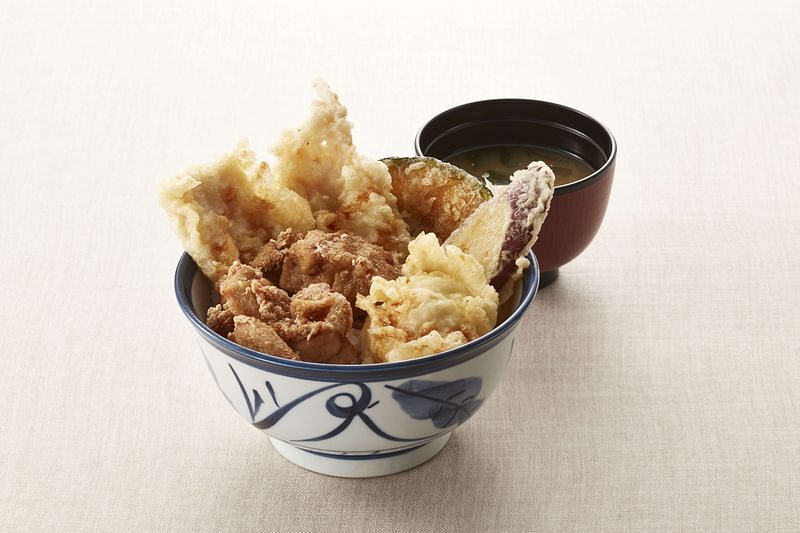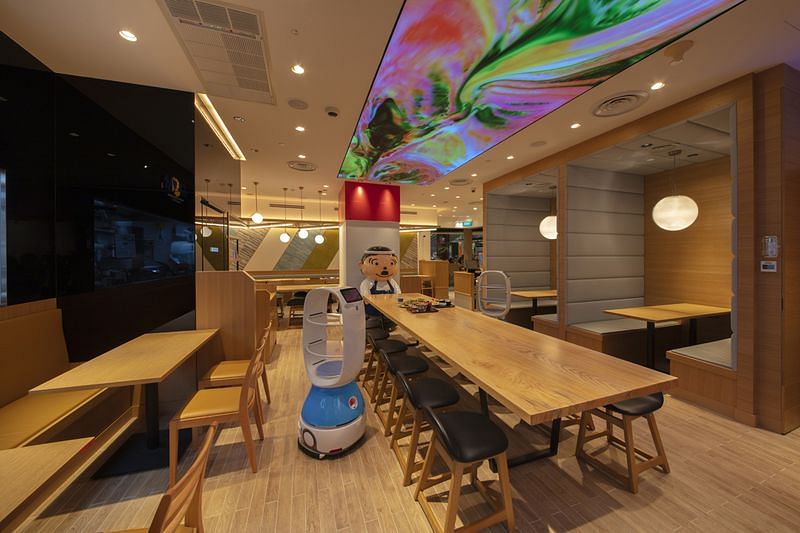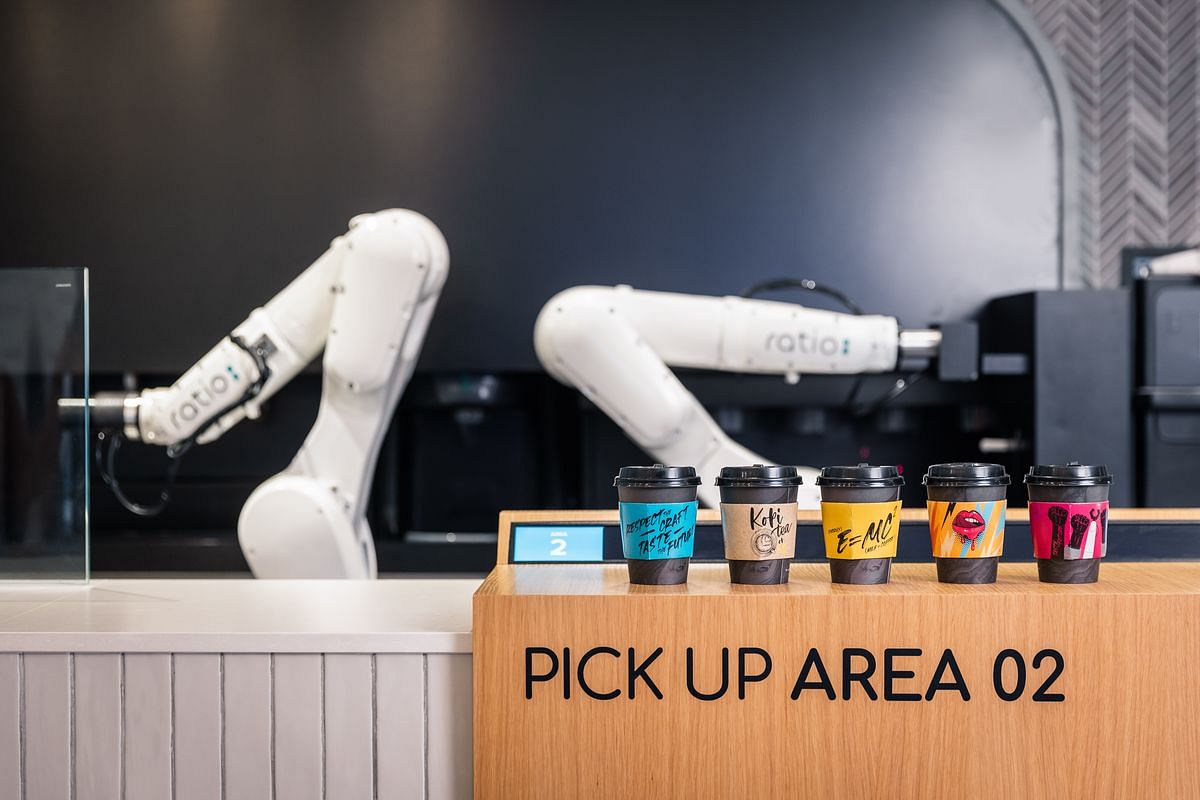Fully automated kitchens have been the stuff of futuristic sci-fi dreams for years now, and while it doesn’t seem to be becoming a reality anytime soon, robots are increasingly making their way into the kitchen or dining room.
We’ve recently covered Ella, Crown Coffee’s drink-making barista, but robots in restaurants as a concept, aren’t all that new. Studio M Hotel’s omelette-making robot manned their buffet line for years. The now-defunct Hawkee served up head chef DIANA’s frankly impressive repertoire of stir-fried, wok-tossed hawker favourites in Fraser Tower – which was undercut by DIANA’s inability to get the necessary wok-hei in the dishes. Ruyi, the Chinese fast food concept started by the Tung Lok group, also offered up 24-hour stir-fries before it closed.
Even smaller local establishments like Rong Heng Seafood (also defunct) attempted to hire anthropomorphic robot servers for a spell, complete with servers and cute names. Though the servers were touted as a way to cut manpower overheads, they still required human staff members to transfer the dishes to the table – the ability to lug 15 kg on their trays at a go, and work tirelessly without breaks, notwithstanding.
You might’ve noticed a pattern. Robot executive chefs haven’t really caught on, at least when it comes to them helming the kitchen. That doesn’t mean robots don’t have a place in the kitchen though.
(Related: PBA Group’s Derrick Yap takes family business from ball bearings to robots)
Tempura Tendon Tenya has just opened its doors last month in Orchard Central – the restaurant hails from Japan, where it reigns as the country’s most popular tendon chain store. Expanding across the country and the globe isn’t easy when the art of tempura takes more than a decade to master. That’s where automation comes in.

For one, removing that human element means that everything is consistent. Every bowl served from Tenya’s kitchen has the benefit of identical, perfectly repeatable tempura, cooked in a patented automatic fryer. There’ll never be a bad day where your ebi gets left in for a couple of seconds too long.
This extends to any of Tenya’s kitchens, regardless of staff training. It’s this kind of consistency that lends wonders to a business’ scalability, anytime, anywhere – though they haven’t yet gotten around to handing out kitchen knives for mise en place (thankfully).

(Related: Hairy crab season is back with bigger and better menus)
It also helps keep overheads low – as we’ve mentioned, machines can work longer and faster, without the chance of making mistakes. Tenya’s fryers can produce up to 1,000 pieces an hour, with an induction heating system that eliminates the need to get rid of overused oil periodically. These savings from economies can go to better ingredients, or cheaper food.
Of course, there’s the hygiene and food safety factor to consider. Even if – or when – Covid-19 vaccines eliminate the need for safe distancing and mask-wearing, it’s shown us one thing: moving forward, it’s better to be safe than sorry. And what better way to future-proof F&B than robots? They can’t fall sick, and can be thoroughly cleaned in ways no humans in the kitchen can. Tenya is also equipped with some robotic waitstaff, further reducing the interaction between, well, actual humans.

Finally, we can look to the ‘smart’ side of using smart-tech in the kitchen. Much like Crown Coffee’s Ella, Ratio Cafe & Lounge is looking to capitalise on their robotic bartender/baristas’ intelligence. While the former relied on predictive algorithms to plan future stock purchases, the latter focuses on the customer front – namely, ultimate customisability.
As their name suggests, you get to customise your order at Ratio to a tee. They’ve got an exhaustive selection of beans from coffee havens like Brazil, Ethiopia and Guatemala, plenty of spirits and even incorporated local flavours (here called Nanyang Kopi). And while you can’t exactly ask your barista for 20.5% of your Irish coffee to be cream – at least without getting a killer stare – you can at Ratio. It’ll remember your order forever, across any Ratio outlet.
(Related: Inside Alibaba’s new restaurants run by robotic waiters)
This customisability and precision also applies to cocktails – Ratio’s robotic helper can pick, shake, and pour drinks catered to the customer, whether you want an extra shot of whisky, or a vermouth-heavy martini.
All said though: do we actually want robots to completely cut out servers, sous-chefs and sommeliers from the restaurant experience? It’s great for a bit of novelty, but dining, after all, is a spectacle – one that’s very much in need of a human touch.
They might be able to deliver the champagne, and even pour out some bubbly – but can they make wine recommendations on the fly based on how diners are responding? Can they really rattle off charming stories, or make witty conversation that’ll keep diners coming back in the future?
Not yet they can’t. We say – employ automation in F&B liberally where it works: recreating picture-perfect bowls of great grub, whether in catering or a family restaurant. And for where imperfection is appreciated – or encouraged – let the humans do the cooking.



